Crab Season in Maryland runs from April 1to to December 15th.
Catch me if you can !!!
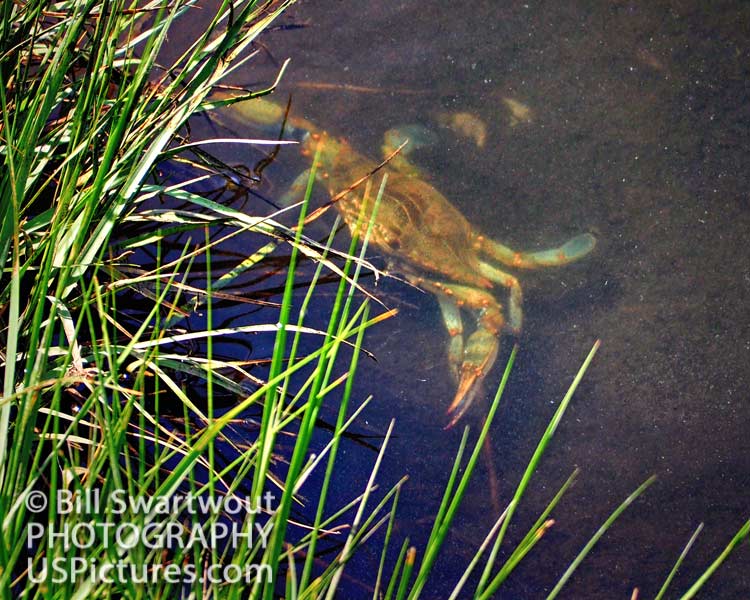
Chesapeake Bay Blue Crab lurking in a marsh at Assateague Island, Maryland.
Prints available: CLICK HERE
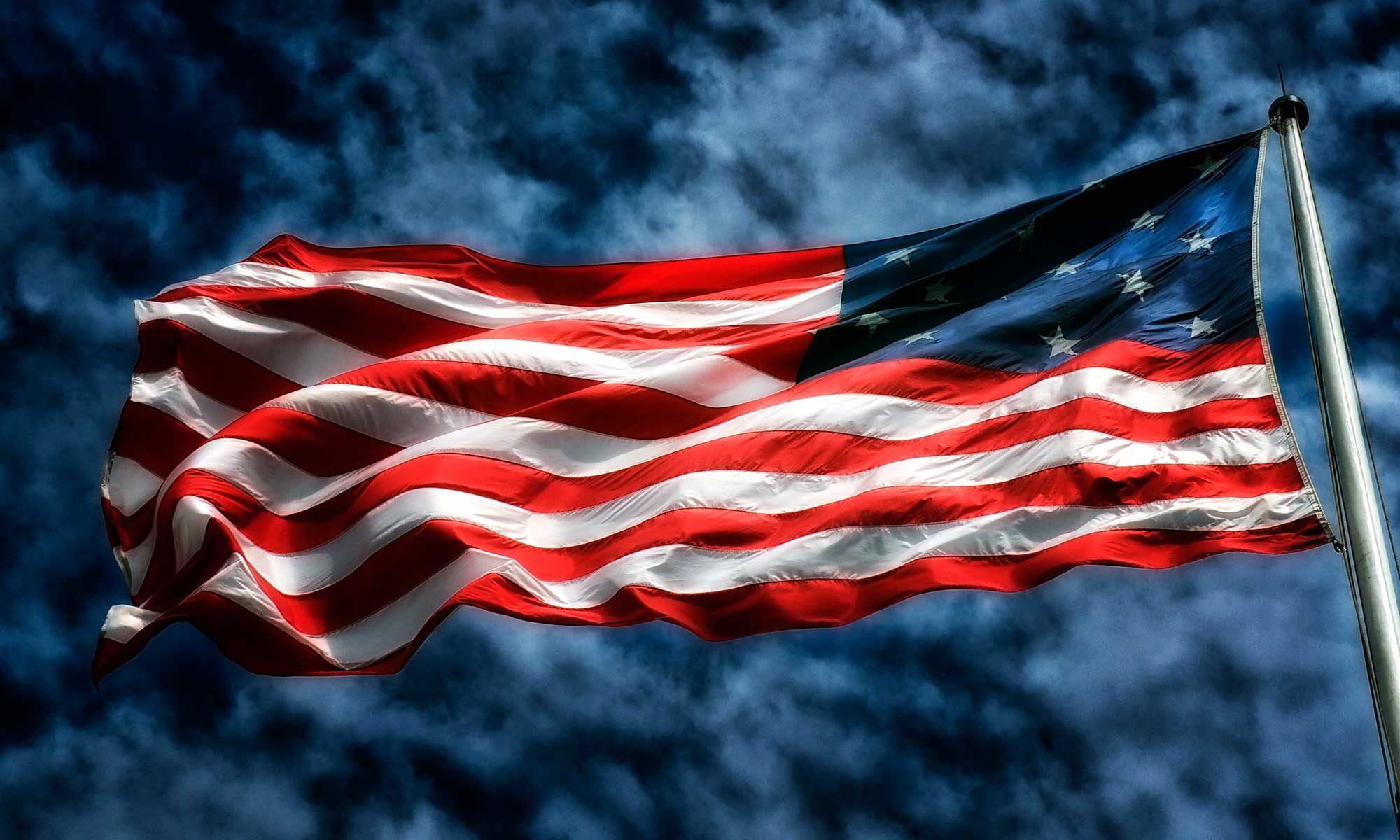
U.S. Pictures: Bill Swartwout Photography
United States Landscape & Seascape Pictures

Chesapeake Bay Blue Crab lurking in a marsh at Assateague Island, Maryland.
Prints available: CLICK HERE
A tragic ship collision caused the Key Bridge to collapse like a house of cards on March 26, 2024.
In the wee hours of a cold March morning, a large freighter, the Dali, lost power and steerage control and collided with a major support of the Francis Scott Key Bridge in Baltimore, Maryland. The collision occurred at 1:28 AM and caused the main supporting structure to fail and the bridge spans to, literally, fall apart.
Imagine the chaos that ensued when a massive freighter collided with the Francis Scott Key Bridge, causing sections to collapse into the Patapsco River below. The sheer force of impact from the container ship left onlookers stunned and authorities scrambling to respond to this unprecedented disaster. As emergency crews rushed to the scene, questions arose about how such a catastrophe could have occurred in one of the busiest waterways in Maryland. This disaster effectively closed the (very busy) Port of Baltimore for an indeterminant length of time.
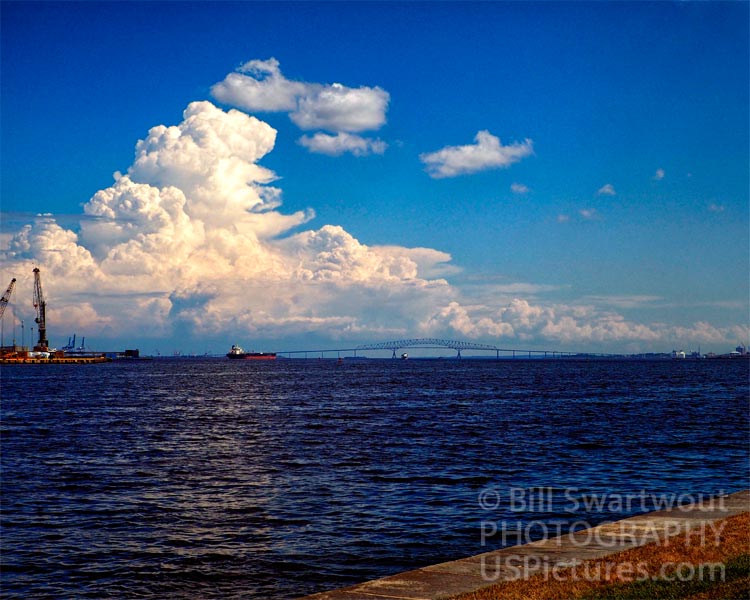
The Key Bridge was opened for use in 1977. This author can remember watching the construction process for the years before the opening. The full name is, of course, derived from the lawyer, Francis Scott Key, who penned the words to our National Anthem, the Star Spangled Banner.
The collapse of the Francis Scott Key Bridge in Baltimore sent shockwaves through the city as the iconic structure crumbled into the Patapsco River. The aftermath of the bridge collapse revealed a startling vulnerability in our infrastructure and raised concerns about the safety of maritime navigation through this vital transportation corridor at the state and national levels. Investigations underway and repair efforts are already being planned. One can’t help but wonder about the long-term implications of this incident on shipping traffic and regional economy. As we await updates on this developing story, it’s clear that lessons must be learned from this tragic event to prevent similar disasters in the future.
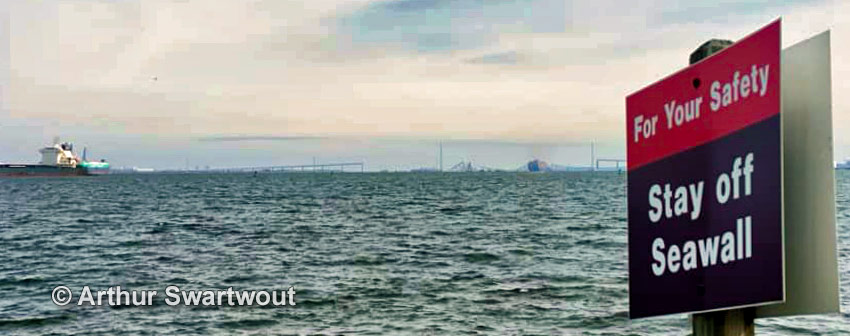
For many, this catastrophic event raised questions about infrastructure resilience and safety in a rapidly changing world. In moments like these, we are reminded that even our most trusted landmarks are vulnerable to unexpected challenges and that vigilance and care must be paramount in safeguarding our communities from potential disaster.
Visit www.FSKBridge.com for more photos of the Key Bridge as it used to be.
Pawleys Island is renowned for its exquisite seashell collection, and among the most coveted treasures is the Imperial Venus Clam Shell, AKA the Pawley’s Island Shell. Known for its distinct ridges and delicate pink hue, this shell has captured the imagination of beachcombers and collectors alike. Each shell tells a unique story of its journey through the tides, bearing witness to the ebb and flow of the ocean’s timeless dance.
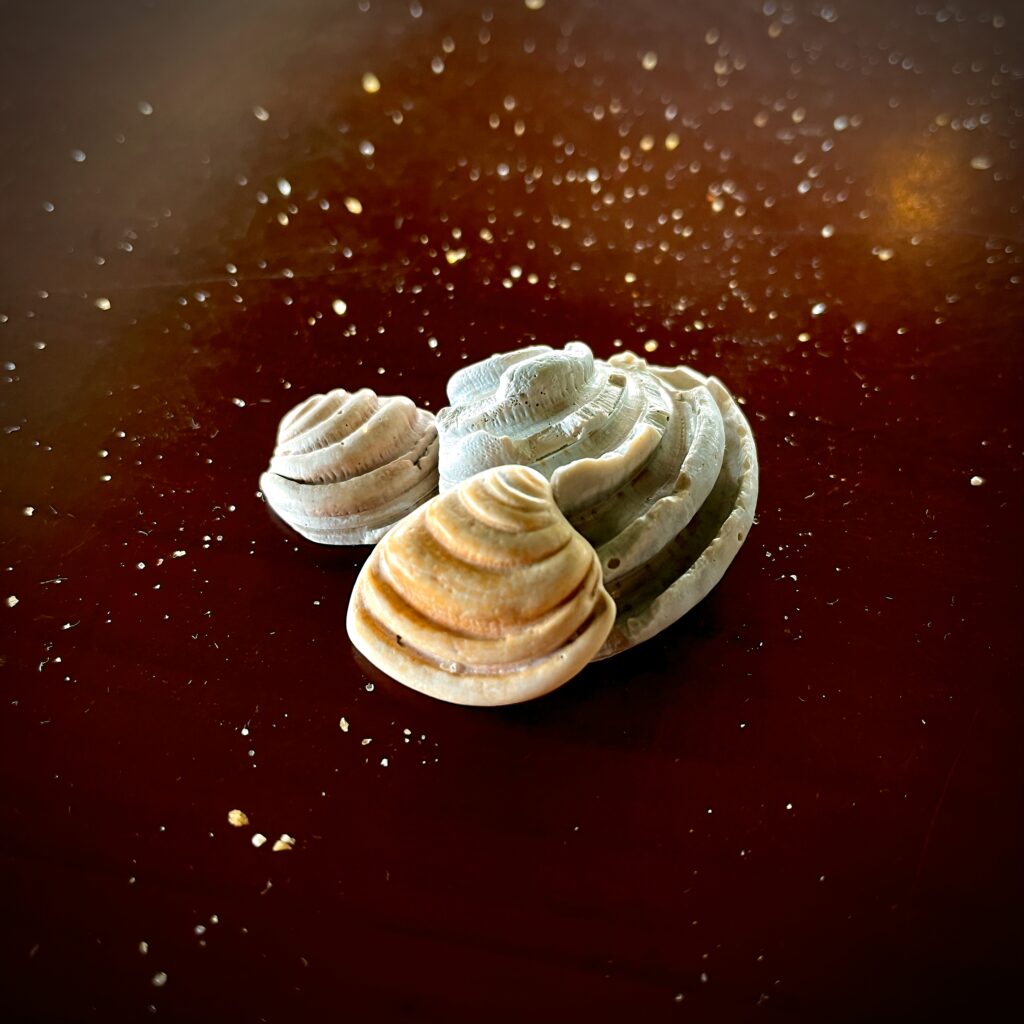
Beyond their stunning beauty, these seashells also serve as crucial components of their local ecosystem. They provide homes for tiny sea creatures and contribute to the overall ecological balance of Pawleys Island’s shores. As visitors stroll along the pristine beaches, they are invited to marvel at these tiny natural wonders while gaining a deeper appreciation for the fragility and resilience of marine life.
From casual beachcombers to seasoned shell enthusiasts, Pawleys Island offers a unique opportunity to connect with nature through its awe-inspiring seashell collection. These shells not only serve as beautiful mementos but also hold a profound significance in preserving our planet’s delicate coastal ecosystems. With each discovery on this serene shore, visitors are reminded of nature’s boundless marvels and inspired to protect them for generations to come.
Keep in mind that the Pawley’s Island Shell and the Imperial Venus Clam are one in the same. Here is an interesting and comprehensive narrative about Pawley’s Island Shells: The Legend of the Pawley’s Island Shell.
The history of the Imperial Venus Clam Shell is as fascinating as the shell itself. Dating back to ancient civilizations, these beautiful shells were often used as currency, decorative ornaments, and even religious symbols. In Roman times, they were associated with the goddess Venus, who was believed to have emerged from a giant clam shell. This association elevated the status of the Imperial Venus Clam Shell and made it a sought-after item among nobility and the upper class.
In more recent history, these exquisite shells have been treasured for their iridescent beauty and delicate patterns. They have been used in traditional crafts, jewelry making, and as decorative accents in homes around the world. The enduring allure of the Imperial Venus Clam/Pawley’s Island Shell speaks to its timeless appeal and its ability to transcend centuries of cultural changes. Whether displayed in a museum or adorning a piece of jewelry, each shell tells a story that spans generations and continents.
The Imperial Venus clam shell, commonly found along the shores of Pawleys Island, is a marvel of nature with its distinctive characteristics. This unique shell features a smooth, glossy exterior with delicate ridges and concentric patterns that create an enchanting visual display. Its symmetrical shape and striking color variations ranging from deep purples to pearly whites make it a coveted find for both collectors and beachcombers alike.
One of the most fascinating aspects of the Imperial Venus clam shell is its resilience and adaptability to different environments. Despite facing various challenges in its habitat, this remarkable species has evolved to thrive in changing conditions, showcasing its ability to endure and flourish. Furthermore, the intricate growth lines on the shell provide evidence of the clam’s journey through life, offering glimpses into its age and experiences. These shells serve as enduring reminders of nature’s artistry and perseverance, captivating all who come across them along the sandy shores of Pawleys Island.
The Imperial Venus Clam Shell, known for its exquisite beauty and rarity, can be found in the pristine beaches of Pawleys Island, South Carolina. These (very) elusive shells are often discovered at low tide, nestled among the sandy shores or hidden beneath the crystal-clear waters. The search for these extraordinary treasures requires patience and a keen eye, as they are often camouflaged among other seashells and debris.
Pawleys Island’s unique coastal environment provides the perfect habitat for the Imperial Venus Clam Shell to thrive. With its lush marshes and gently rolling waves, this barrier island offers a picturesque setting for beachcombers to seek out these coveted shells. Exploring the beaches during early mornings or late afternoons might enhance your chances of stumbling upon these elegant shells as they shimmer under the soft sunlight. Whether you’re an avid shell collector or a nature enthusiast, stumbling across an Imperial Venus Clam Shell along Pawleys Island’s shoreline is truly a remarkable experience worth cherishing.
Preserving seashells in Pawleys Island holds a significance that transcends mere decorative appeal. These exquisite remnants of marine life not only serve as reminders of the island’s natural beauty, but also play a crucial role in preserving its delicate ecosystem. They provide homes and protection for various marine creatures, such as hermit crabs and mollusks, contributing to the island’s biodiversity. By safeguarding these seashells, we contribute to the conservation of the island’s environmental balance and sustain the livelihoods of its inhabitants.
Moreover, preserving seashells in Pawleys Island allows us to honor and celebrate the rich cultural history of this coastal community. For generations, these seashells have been integral parts of native rituals and artisanal practices, holding deep spiritual and artistic significance. By valuing and protecting these treasures, we pay homage to the traditions and heritage that have shaped Pawleys Island into a unique haven for both nature lovers and history enthusiasts. In doing so, we ensure that future generations can continue to cherish these shells as meaningful connections to their past.
The joy of collecting seashells is an age-old pastime that gives us a glimpse into the captivating world beneath the waves. When embarking on this endeavor, be sure to respect nature by only taking empty shells and leaving living creatures untouched. To preserve your seashell collection, it’s vital to clean them gently with mild soap and water to remove any debris or lingering odors. Once dry, a light application of mineral oil can enhance their natural beauty and provide protection against drying out.
In addition to these preservation techniques, consider displaying your seashells in an aesthetically pleasing manner to showcase their unique shapes and colors. Mounting them in shadow boxes or arranging them in glass jars can become beautiful decor pieces that bring the tranquil essence of the ocean into your home. Lastly, always stay informed about local regulations when collecting seashells to ensure you’re respecting the environment and preserving its natural beauty for future generations.
As we conclude our exploration of the Imperial Venus Clam Shell, let’s take a moment to appreciate the beauty and wonder of nature’s treasures. The intricate patterns and delicate colors of seashells like the Imperial Venus Clam remind us of the artistry that exists within our natural world. These shells have a story to tell, a history that spans millions of years, shaped by the ebb and flow of ocean tides and currents.
By taking a moment to admire these seashells, we can connect with the environment around us in a deeper way. It’s a reminder to slow down and observe the small details that often go unnoticed. When we pause to appreciate the intricacies of nature’s treasures, we gain a renewed sense of awe for the world we inhabit. Let’s continue to cherish and protect these gifts from nature, allowing their beauty to inspire us in our everyday lives.
Photographs of Pawley’s Island Shells will soon be available in our gallery in our online galleries with Fine Art American and Pictorem.
Through a program with ImageKind®, on of my production sources, I now have many of my images listed on the world’s premier marketplace – AMAZON. This program allows my artwork photography to be sold, on the same high quality Print on Demand (POD) products currently offered on Imagekind®, through the world’s premier marketplace – AMAZON.
Bill Swartwout Photography has been available through Imagekind® since early 2007 and has enjoyed a solid relationship with them over the last several years. Their production quality is top notch (never experienced a return so far) and there are several stretched canvases hanging in our home.
Free Shipping? Yes, of course, these wall art photographs are offered with free shipping. The only caveat is that they will not be delivered in two days (as many of us are used to with normal purchases). The wall art images are printed to order (POD) and that production time must be added to the shipping time. However, orders usually arrive within two weeks of hitting that Buy Button.
Links to Bill Swartwout Photography wall art on…
Amazon: https://www.amazon.com/s?k=bill+swartwout+photography&dc
Imagekind®: http://travel.imagekind.com/